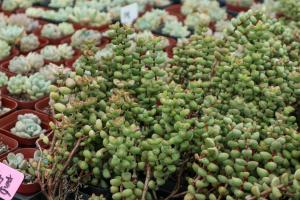Introduction
A planter pot is a container designed for holding plants and dirt, often used for indoor and outdoor gardening purposes. Planters can come in a wide variety of materials and designs, including ceramic, plastic, metal and even natural materials like wood.
Types of Planter Pots
There are many types of planter pots available on the market and choosing the right one for your needs will depend on several factors, including the type of plant you want to grow, the location of the pot, and your design preferences. Some popular types of planter pots include:
Terracotta pots: made of fired clay, these pots are porous and can help regulate soil moisture levels
Plastic pots: lightweight and durable, these pots are often used for indoor plants
Metal pots: made of materials like stainless steel or copper, metal pots can add a modern or industrial touch to any space
Wooden planters: perfect for rustic or natural settings, wooden planters can be made of cedar or other rot-resistant woods
Benefits of Using a Planter Pot
There are many benefits to using a planter pot for your plants, including:
Controlled soil conditions: a planter pot can help regulate soil moisture, pH levels and nutrients, giving your plants the ideal growing conditions
Easy maintenance: with a planter pot, it is much easier to water and care for your plants, especially if they are in a location that is difficult to access
Increased mobility: if you need to move your plants to follow the sun or for any other reason, a planter pot makes it easier to do so
Design flexibility: with so many different options available, you can choose a planter pot that matches your design preferences and complements your existing decor
Tips for Choosing and Maintaining a Planter Pot
Choosing and maintaining a planter pot can help ensure your plants thrive and continue to look beautiful. Here are some tips to keep in mind:
Choose the right size pot: make sure the pot is the right size for your plant, with enough room for it to grow and thrive
Consider material: choose a material that works for your space and the type of plant you want to grow
Drainage is key: make sure your planter pot has adequate drainage holes to prevent water buildup and root rot
Keep the soil moist but not too wet: avoid overwatering your plants, which can lead to root rot and other problems
Choose the right location: consider the amount of sunlight and temperature your plant needs, and choose a location that meets these needs
Conclusion
A planter pot is a versatile and practical solution for gardening and plant care, offering many benefits and design options. By choosing the right pot for your needs and using proper maintenance techniques, you can help ensure your plants thrive and add beauty to your home or outdoor space.

 how many times do yo...
how many times do yo... how many planted tre...
how many planted tre... how many pine trees ...
how many pine trees ... how many pecan trees...
how many pecan trees... how many plants comp...
how many plants comp... how many plants can ...
how many plants can ... how many plants and ...
how many plants and ... how many pepper plan...
how many pepper plan...































